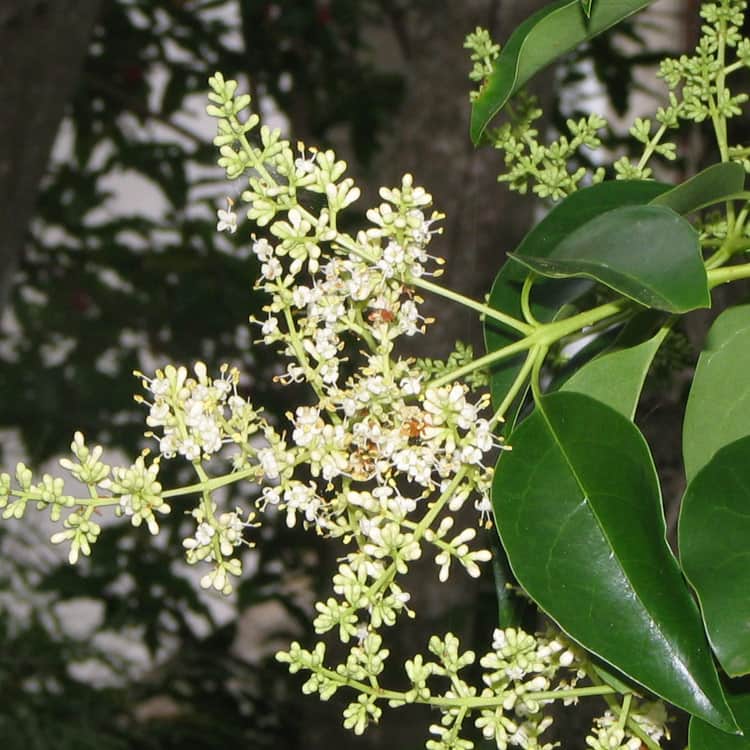Warning
Seek medical attention if symptoms occur or more than 5 berries are eaten.
Description
A group of evergreen shrubs or small trees cultivated as garden ornamentals, wind breaks and hedges, some of which have now become environmental weeds.
Cream coloured flowers are small, tubular-shaped, often scented and grouped in pyramid-shaped clusters at the ends of the branches.
Leaves are opposite, dark green and glossy, variegated with a gold border in some cultivars, thick and leathery; 2 to 10cm long and up to 2cm wide, ranging in shape from broadly oval to oblong/lance-shaped.
Toxicity
Symptoms
Ingestion of berries may result in abdominal pain, nausea, vomiting and diarrhoea. Contact with berries or leaves may cause dermatitis or eye irritation. The flower perfume may cause respiratory irritation.
Images


Details
Common name: Privet
Botanical name: Ligustrum spp. (includes L. lucidum, L. ovalifolium, L. sinense, L. japonicum, , L. vulgare)
Other common names: Japanese privet, Wax-leaf privet, Broad-leaf privet, Chinese privet, Common privet
Family: Oleaceae
General description: A group of evergreen shrubs or small trees cultivated as garden ornamentals, wind breaks and hedges, some of which have now become environmental weeds.
Flowers: Cream coloured flowers are small, tubular-shaped, often scented and grouped in pyramid-shaped clusters at the ends of the branches.
Leaves: Leaves are opposite, dark green and glossy, variegated with a gold border in some cultivars, thick and leathery; 2 to 10cm long and up to 2cm wide, ranging in shape from broadly oval to oblong/lance-shaped.
Fruit/Berries: The fruit are round berries, black to dark blue/purple when ripe, 5 to 10mm in diameter often with a waxy coating. The fruit consists of two chambers with two seeds in each one. The pulp is red and bitter.
Other: Ligustrum lucidum and L. sinense are a restricted (category 3) species under Queensland’s Biosecurity Act 2014.